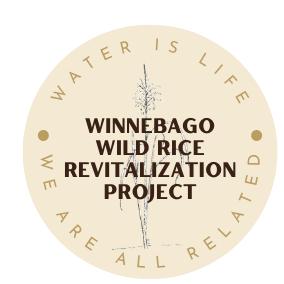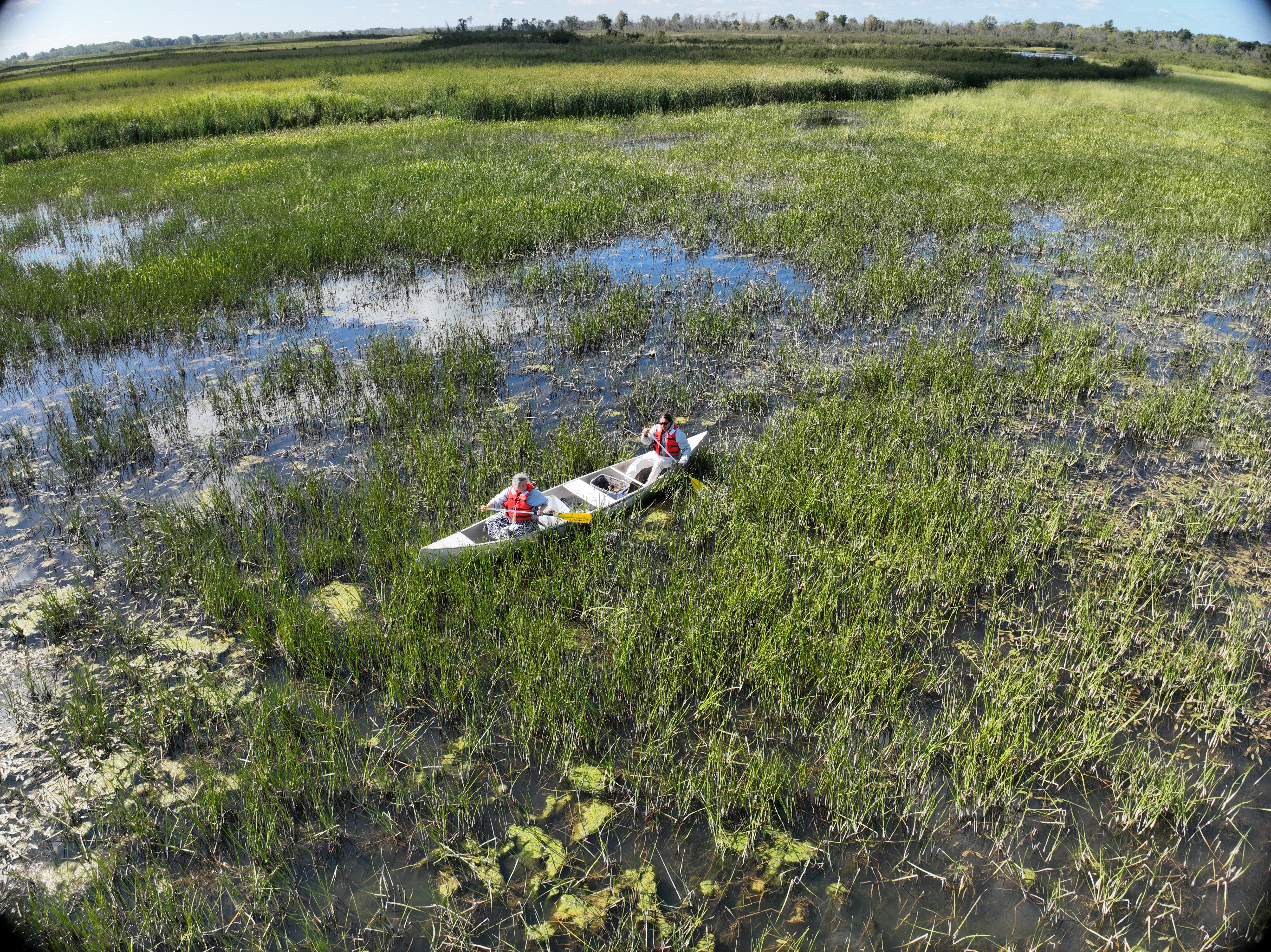“Our Wild Rice, our Manoomin, is our most sacred food. It is food that is first food given to a child when they can eat solid and it is last food before you pass into the spirit world.”
— Winona LaDuke, Seeds of Our Ancestors, Seeds of Life
Mayom (Wild Rice) and the Lake Winnebago Watershed
Wisconsin Indigenous language names for Wild Rice include: Mayom (Mohegan), wąąkšik sįį (Ho-Chunk), Manoomin (Ojibwe), and Mnomen (Potawatomi). Brothertown Indian Nation and other Wisconsin Tribal Nations have strong cultural and spiritual ties to wild rice. For Anishinaabe peoples, manoomin is part of their Migration Story, by which the people were guided to move to where “Food Grows on Water.” Wild Rice is used in celebrations, memorials, and traditions.

Lake Winnebago (Teexete in Ho-Chunk), Wisconsin’s largest inland lake, connects major rivers to Lake Michigan (Ininwewi-gichigami in Ojibwe, Nanāweyah-Kaeqcekam in Menominee). Historically this watershed supported an abundance of Mayom, along with diverse wetlands, wildlife, and fisheries. Colonization led to the waterways and connecting lakes being altered by dams and other development. Since the 1850s, shorelines around Lake Winnebago and connecting lakes have changed drastically. Impoundment, water fluctuations, erosion, and low water clarity have contributed to an average shoreline loss of 7.8 acres per year.

Mayom has managed to persist in some areas and continues to offer habitat for fish, wildlife, and waterfowl. The InterTribal Lake Winnebago Mayom -Wild Rice- Revitalization Project convenes Tribes, InterTribal, state and federal agencies, non-profits, and university employees in partnership for sustaining fisheries, traditions, and healthy food and water for communities, primarily through the preservation and restoration of Mayom.

Project Focus Areas
Scroll down to view and download our project tri-folds!
01
Wild Rice Ecology
Mayom is an emergent wetland plant that is an important source of food for humans and wildlife. To research wild rice, see the Botany literature review here. To learn about restoring, harvesting and processing wild rice, click below to view our booklet. For information and pictures about the growth of Wild Rice (Zizania spp.) in the Winnebago Watershed, go to the story map. Reestablishing Mayom has many benefits to the Lake Winnebago watershed and its ecosystems, including fisheries. Click below to view trifolds that show how wild rice benefits fishing, hunting and trapping.
Click here to learn about Wild Rice Restoration
Click here to check out how Wild Rice benefits Waterfowl
02
Policy & Governance
Policy solidifies change. To make sure Mayom can be established in this watershed, we need to make sure that local and regional policy supports this project and ensures its success.
Click here to view Treaties and policies associated with the project
03
Social & Cultural Connections to Mayom
Because the Lake Winnebago watershed is populated by residents who like to fish, swim, hunt and boat in these lakes, we help communicate the social, ecological and cultural benefits of mayom to all and the importance of restoring it in the watershed.
Click here to learn about Wild Rice benefits to hunting and trapping
Click here to learn about Wisconsin Tribes and their connections to Wild Rice
04
Mapping
Participatory mapping is crucial for engaging watershed citizens! Mapping Indigenous place names and rice monitoring work are central to the Lake Winnebago Wild Rice Revitalization project. Students have worked with Tribal language divisions and educators to convene Indigenous place names and stories into a wall map. This map conveys cultural connections of Tribes to Lake Winnebago and connecting lakes. These maps portray Traditional Ecological Knowledge (TEK) as well as guide us to locations where wild rice has grown in the past. Another mapping goal of this project is to produce an interactive floor map to promote the involvement of watershed communities in the stories and values of Lake Winnebago.

